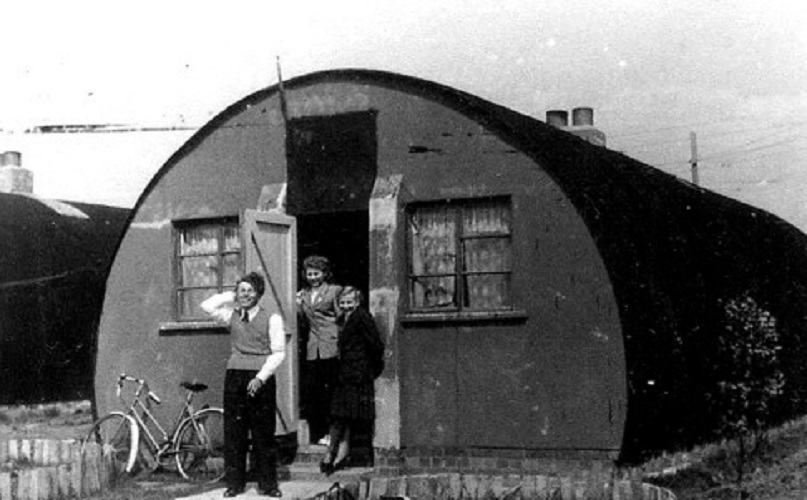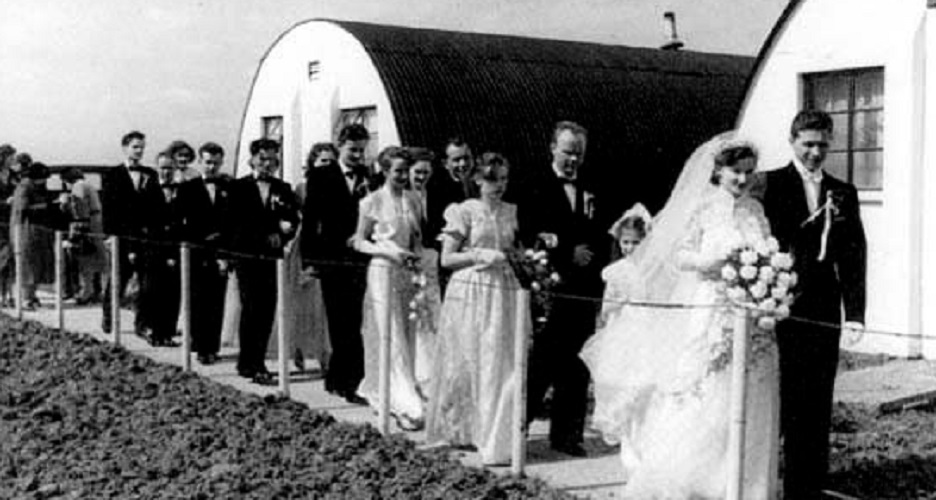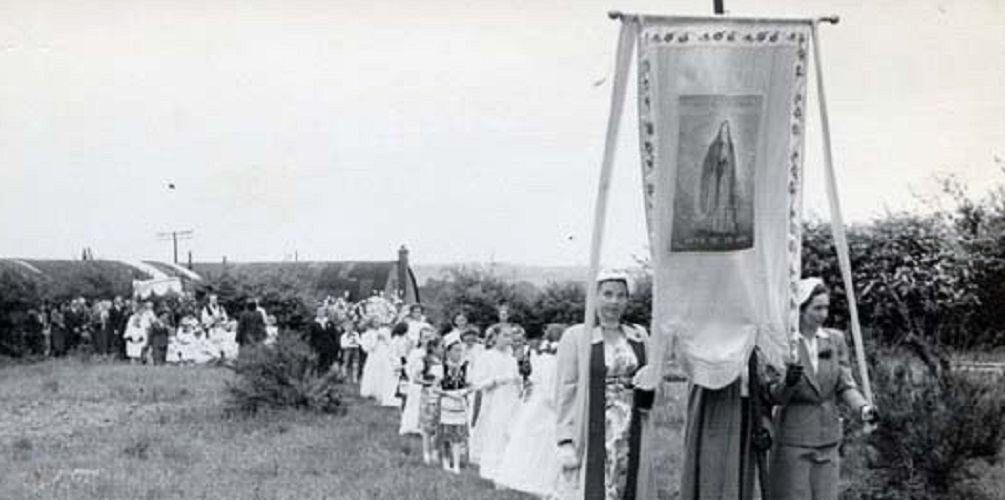Sunday 2 June 2024
Polish Resettlement Camps in Leicestershire
LAHS Member Jakub Milcarz considers life in the Polish Resettlement Camps of post-war Leicestershire.
According to the 2021 census, the Poles are the largest foreign-born nationality in the United Kingdom. Leicester itself is home to one of the largest Polish communities in the United Kingdom. Whilst the vast majority of the Poles living in Leicester have arrived here after 2004 due to the freedom of movement guaranteed by Britain’s then membership of the European Union, the foundations of Polish life in the city can be traced to the aftermath of the Second World War. These so called ‘Old Poles’ arrived in Leicester due to the upheavals of the Second World War and established Polish institutions such as the Polish church and the Polish Saturday school which the Polish community of Leicester uses to this day. Whilst the Poles of today are well known and well established throughout Leicestershire, the Polish community emerged from an archipelago of resettlement camps scattered around Britain, with many in Leicestershire itself.

But why did the Poles need resettling in Britain? As is well known, the Second World War began with the invasion of Poland in 1939. What is sometimes overlooked, is that Germany was but one aggressor attacking Poland in that fateful year. The other attacking from the East was the Soviet Union. In the aftermath of the Soviet Invasion, thousands of Poles were relocated to the depths of Siberia, entire families including the elderly, women, and children. In 1941 the friendship between the Soviets and the Germans collapsed and with operation Barbarossa underway, the Soviet Union joined the Allied side and in a cruel choice of words granted an ‘amnesty’ to the Polish population it had deported. Further still, it was decided to form a second Polish Corps in the Soviet Union. The Polish army, eventually departed from the Soviet Union through the Middle East taking with it thousands of Polish civilians. There, under British command, it began preparing for fighting alongside the Allies whilst the women and children were redistributed in refugee camps across the world, most substantially throughout the Middle East and Africa.
After the war, when in the aftermath of the Yalta conference, a Communist government was established in Poland, these thousands of Poles could not and would not go back to a country under the domination of the Soviets, who had caused them so much suffering, and who they rightfully feared would not hesitate to do so again should they return. Most, but not all the Poles who settled in Britain after the war belonged to this group of former Siberian exiles. Others faced a whole array of reasons for their displacement. Britain, feeling a sense of obligation to the Poles who fought under its command decided to resettle these Poles in Britain and so in 1947 the Polish Resettlement Act was passed which created the Polish Resettlement Corps to prepare the Poles for civilian life in Great Britain. The first stage of this task was to find shelter for these families, and so throughout the country, former airfields, RAF bases and other similar encampments were transformed into little Polish towns where thousands of families lived, in Nissen huts, or as the Poles came to affectionately call them ‘Barrels full of laughter’.
Leicestershire was home to quite a few of such camps which included large ones such as the Husbands Bosworth, Ashby Folville or the Melton Mowbray camps and smaller ones such as the one found in Loughborough. The Husbands Bosworth camp is by far the most well documented one, and the only one which has an academic book written about it; Urszula Szulakowska’s Husbands Bosworth Polish Resettlement Camp. It is worth zooming in on the Husbands Bosworth Camp as an example of what life was like in the Polish camps. The conditions which the Poles found upon arrival were not suited for family life, and Szulakowska noted that the camp initially suffered from a rat infestation. The Poles therefore had to carry out much work to bring the camp up to standard. As mentioned before, the vast majority of the camp’s inhabitants lived in metal Nissen huts, which had the tendency of getting very cold in winter and very hot in the summer. The huts were likewise not of great size and sections were often divided using curtains. Nevertheless, in all camps what shone through was the gardens which the Poles created outside of their huts to add some character to the metal houses. Unfortunately, the camp like most others, had no running water and so the toilets and the showers were located outside of the huts in communal buildings. In the Husbands Bosworth Camp, the Poles built a second bath house themselves as well as making many other renovations around the camp.

The Poles in the Husbands Bosworth Camp just like in all other camps had to seek employment. As such, when not actively working on improving the conditions in the camps, the Poles were busy working and organising transport back and to work. Szulakowska noted that most people were employed in the local industry and agriculture with ‘only the very oldest’ receiving any help from the National Assistance Board. Another fact worth noting, is that in Britain, the pre-war qualifications of the Poles were largely not recognised. In fact, according to Thomas Lane in post-war Britain only 29% of Poles found employment which corresponded to their level of education. The children in the Husbands Bosworth camp also attended local schools as well as taking part in Polish education which was organised by the Poles themselves in the confines of the camps. Apart from this the Poles organised a very rich cultural life. As Szulakowska put it ‘The social, political, religious and cultural life of the camp was organised by the Poles themselves and there was never any external interference from the British authorities in such matters.’ This cultural autonomy led to the interesting development of many centres of Polish cultural life scattered throughout the British countryside. The Husbands Bosworth camp was full of celebrations ranging from the religious such as Christmas or St Nicholas’s day (which is a very important day in Polish culture as it is when the children receive their presents from St Nicholas) to the patriotic ones of pre-war Poland such as the Polish independence day celebrated on the 11th of November.

As time went on, the Poles found employment and saved up enough money to move out of the camps and settle throughout Britain. Nevertheless, for the first few years after the Second World War the Poles lived in a strange world of encampment within a cultural sphere of their own. It is important to note however, that this isolation was not the result of the Poles’ own doing but was a decision made by the British government, one which was always designed to be temporary. As the camps closed in the late 1950s the Polish diaspora became widespread. Settling outside of the camp was often not easy, and many of the Poles reported hostility, especially in the early years. The main source of hostility was the idea that the Poles were stealing the jobs of the British population, an accusation which the trade unions were very willing to vocalise. In fact, many of the Poles chose to change their names and surnames to seem more British. Nevertheless, the Polish community in Britain remained committed to its national identity and contributed a lot to the city of Leicester. The origins of the Poles from the camps show us that migrants, refugees, and resettlement are not new things, but something which our city and our country has experienced before. Not many people know about the Polish refugee camps throughout Britain, but it is a history which is relevant to understanding not just the history of the Polish diaspora, but the history of multiculturalism in Britain more widely.
The author of this article, Jakub Milcarz, was the 2024 LAHS BA History prize winner for his dissertation ‘Living Conditions in Polish Resettlement Camps 1947-1960’ (De Montfort University, 2023)
Sources
All images came from the Polish Resettlement Camps in the UK 1946-1969 website. A site created by Zosia and Jurek Biegus, authors of the 2013 book Polish Resettlement Camps in England and Wales which documents life in 30 camps after WW2.
Bailkin, Jordanna. Unsettled: Refugee Camps and the Making of Multicultural Britain. Oxford: Oxford University Press, 2018.
Burell, Kathy. ”Homeland memories and the Polish community in Leicester. In ”The Poles in Britain 1940-2000, From Betrayal to Assimilation, edited by Peter D Stachura. London: Frank Cass Publishers, 2004.
Davies, Norman. God’s Playground: A History of Poland Volume II 1975: to the present. New York: Columbia University Press 1981.
Lanes, Thomas. Victims of Stalin and Hitler: The Exodus of Poles and Balts to Britain. Basingstoke: Palgrave Macmillan 2004.
Nocon, Andrew. ”A Reluctant Welcome? Poles in Britain in the 1940’s.” Oral History. 24 (1996) 79-87.
Paterson, Sheila. ”The Polish Community in Britain,” The Polish Review. 6 (1961): 69-97
Rogalski, Wieslaw. The Polish Resettlement Corps 1946-1949: Britain‘s Polish Forces. Warwick: Helion & Company Ltd, 2019.
Stachura, Peter, D.”The Poles in Scotland 1940-1950. Some New Perspectives.” in European Immigrants in Britain 1933-1950 edited by Johanes Dieter Steinert and Inge Weber-Newth 171-199. Berlin: K.G Saur, 2003.
Szulakowska, Urszula. Husbands Bosworth Polish Resettlement Camp (1948-58): Polish Identity in Post-War Britain. Cambridge: Cambridge Scholars Publishing 2020.
Polish Wedding, Melton Mowbray, 1954. Photo Courtesy of Polish Resettlement Camps in the UK `1946-1969 Website


